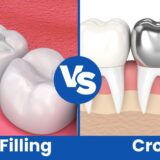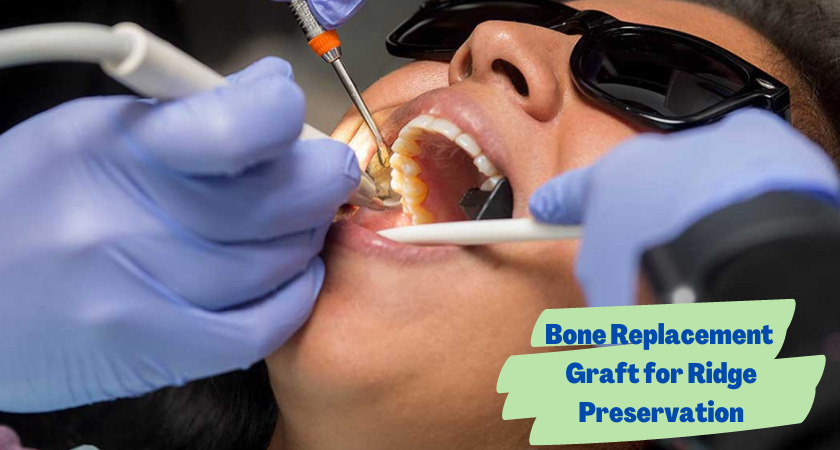Bone degeneration begins to occur immediately when a tooth is extracted. The remaining bones shrink very fast in the beginning, and then they slowly continue to deteriorate with time. Such bone shrinkage can lead to implant failure. However, there are ways to prevent bone degeneration after tooth removal.
Ridge preservation is a procedure in which a bone graft is placed at the ridge of the bone to prevent shrinkage. The process is quite quick and pain-free and prevents the need for bone grafting in the future.
Is Ridge Preservation necessary?
Your teeth are anchored to a bone known as the alveolar bone. The alveolar bone holds your teeth firmly in place.
Ridge preservation is also called Socket preservation.
The body starts to absorb the alveolar bone because it is no longer required once a tooth is removed. Bone shrinkage occurs in two ways – Horizontal and Vertical.
Horizontal shrinkage occurs as a result of bone collapse. The vertical shrinkage leaves the bone with less length. This degeneration makes the remaining ridge much narrower than earlier.
In the case of dentures, degeneration and shrinkage occur very quickly.
Ridge Preservation after tooth removal
There are various ways to preserve the ridge during and after the tooth extraction. After the tooth extraction, a bone graft is immediately placed in the socket, filling the void left behind by the missing tooth.
The bone graft supports and preserves the tissue until it is eventually replaced with a new alveolar bone. However, the bone graft placed in the socket does not last forever. Getting dental implants at least six months after ridge preservation is the best way to preserve your jawbone.
Why is bone grafting required?
If you want dental implants, bone grafting is necessary as dental implants fuse with your jaw bones. Having enough bone makes the implant stronger. Bone grafting regenerates your jawbone by putting a substitute in the area. Then it is replaced by your body to support your implants.
The graft takes months to fuse with your normal bone and to be replaced by a new one. New bones take six to nine months to fill the space. With severe bone loss, experts may take four to nine months after grafting to proceed with implants.
After tooth removal, a bone graft ensures the best possible placement of future dental implants. The bone grafts for dental implants are essential as they result in long-lasting implants and a natural look.
Bottom line
In conclusion, it is good if ridge preservation is done as soon as possible after the tooth extraction. Often dental implants are immediately placed after the tooth is extracted. But getting your dental implants after a few months of ridge preservation is recommended to preserve your jawbone.
Visit our official website if you have more dental queries.






